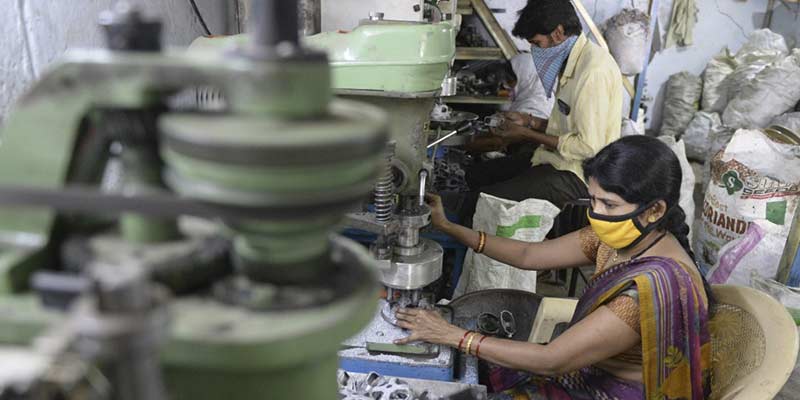- India
- Aug 23
Explainer - Prime Minister’s Employment Generation Programme (PMEGP)
Khadi and Village Industries Commission (KVIC) has signed an MoU with the Department of Posts.
Under this, the employees of the Postal Department working across the country will do physical verification of new units being set up across the country under the Prime Minister’s Employment Generation Programme (PMEGP). KVIC will also train the employees of the Postal Department for physical verification.
Prime Minister Employment Generation Programme (PMEGP)
• It is a major credit-linked subsidy programme aimed at generating self-employment opportunities through establishment of micro-enterprises in the non-farm sector by helping traditional artisans and unemployed youth.
• PMEGP was launched in 2008 by merging two schemes — Prime Minister’s Rojgar Yojana (PMRY) and Rural Employment Generation Programme (REGP) — for generation of employment opportunities through establishment of micro enterprises in rural as well as urban areas.
• The scheme is implemented by Khadi and Village Industries Commission (KVIC), as the nodal agency at the national level. At the state level, the scheme is implemented through State KVIC Directorates, State Khadi and Village Industries Boards (KVIBs) and District Industries Centres (DICs) and banks.
• Under the scheme, loans are provided by all public sector banks, selected private sector banks and co-operative banks with margin money subsidy being given by the ministry of MSME through KVIC.
• Since inception of the scheme from FY 2008-09, more than 9.65 lakh micro enterprises have been assisted across the country with a Margin Money subsidy of more than Rs 25,263.33 crore providing estimated employment to 78.84 lakh persons.
• Under PMEGP, there is no specific target set for women entrepreneurs. However, women are considered under special categories under the scheme and are eligible for higher Margin Money subsidy and lower personal contribution.
• Any individual above 18 years of age is eligible for applying under the scheme. General category beneficiaries can avail margin money subsidy of 25 per cent of the project cost in rural areas and 15 per cent in urban areas.
Objectives of PMEGP:
i) To generate employment opportunities in rural as well as urban areas of the country through setting up of new self-employment ventures.
ii) To bring together widely dispersed traditional artisans, rural and urban unemployed youth and give them self-employment opportunities to the extent possible, at their place.
iii) To provide continuous and sustainable employment to a large segment of traditional and prospective artisans and rural and urban unemployed youth in the country, so as to help arrest migration of rural youth to urban areas.
iv) To increase the wage earning capacity of artisans.
v) Contribute to increase in the growth rate of rural and urban employment.
Additional steps to make this scheme successful:
• An outlay of Rs 13,554.42 crore has been approved for PMEGP for five financial years (2021-22 to 2025-26) to set up about four lakh projects.
• Maximum project cost admissible has been enhanced from Rs 25 lakh to Rs 50 lakh for manufacturing sector and from Rs 10 lakhs to Rs 20 lakhs for service sector.
• Applicants from Aspirational Districts and transgenders have been included in special category.
• Industries related to animal husbandry like dairy, poultry, aquaculture, insects (bees, sericulture, etc) have been allowed under the scheme.
• Geo-tagging of the PMEGP units has been initiated for capturing the details of products and services offered by the units and to create market linkages for them.
Manorama Yearbook app is now available on Google Play Store and iOS App Store


